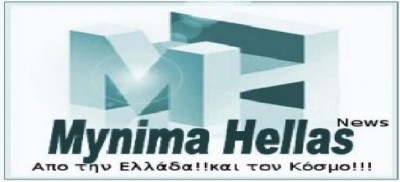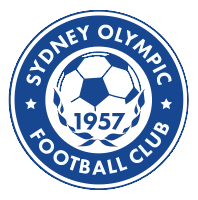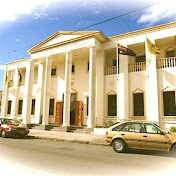CHINESE Government entity Yancoal will have the right to appoint the chair, two directors and potentially the chief executive of Port Waratah Coal Services after the greenlighting of Yancoal’s $3.3 billion purchase of Rio Tinto’s Hunter coal assets.
The largest acquisition of Australian assets by a Chinese Government-controlled company will give Yancoal a powerful hold on key elements of the Hunter coal chain.
This will include ownership of some of the region’s largest mines and a 36.5 per cent strategic stake in Port Waratah Coal and its Carrington and Kooragang terminals, in addition to Yancoal’s existing 27 per cent stake in Newcastle’s third coal terminal.
The Foreign Investment Review Board recommended the deal go ahead after blocking Chinese bids for the Kidman rural empire and the $10 billion Ausgrid sale, while greenlighting smaller renewable energy projects.
Yancoal Australia, which is 78 per cent owned by Yanzhou Coal Mining, which in turn is controlled by an arm of the Chinese Government, will gain Rio Tinto assets under holding company Coal & Allied, including a 67.6 per cent interest in the Hunter Valley Operations mine, an 80 per cent interest in Mount Thorley and 55.6 per cent interest in the Warkworth mine.
Yancoal’s existing Hunter assets are the giant Moolarben mine between Denman and Mudgee, which could produce 21 million tonnes of coal per year, and the much smaller, suspended or troubled mines at Ashton, Austar, Stratford Duralie, Abel, Tasman and Donaldson.
Port Waratah Coal Services chief executive officer Hennie du Plooy confirmed that a Yancoal purchase of Rio Tinto assets would include the transfer of Rio Tinto’s right to nominate three of Port Waratah’s 10 directors, with one as the board chair, and the right to nominate the chief executive for the board’s approval.
The purchase “appears to demonstrate a level of confidence in the ongoing presence of the industry in the Hunter region”, Mr du Plooy said, although there were important steps that had yet to be met including raising funds for the deal. Yanzhou is reported to be willing to invest $US1 billion of fresh equity into Yancoal Australia.
The purchase also has to be ratified by Rio Tinto and Yancoal shareholders. Rio Tinto is not expected to hold an extraordinary general meeting until after it holds its annual general meeting in early May. The purchase is not expected to be finalised until later this year.
“In terms of the transaction, there’s quite a bit still to go,” Mr du Plooy said.
The Yancoal deal comes three years after the Westpac-backed Hastings Fund Management and the Chinese Government’s China Merchants paid $1.75 billion for a 98-year lease of the Port of Newcastle in a 50/50 joint venture in 2014.
While the deal would give Yancoal considerable clout in the Hunter coal industry, the company would remain a customer of Port Waratah Coal Services, which operates under the Long Term Commercial Framework agreement approved by the Australian Competition and Consumer Commission.
“The port needs to serve all the Hunter Valley coal chain,” Mr du Plooy said.
Yancoal has an existing 12 million ship or pay contract with Port Waratah Coal, and a $2.5 billion, 27 per cent stake in the Newcastle Coal Infrastructure Group’s third terminal where it has a contract to ship 14.6 million tonnes annually.
The port needs to serve all the Hunter Valley coal chain. – Port Waratah Coal Services chief executive Hennie du Plooy.
Hunter MP Joel Fitzgibbon welcomed Yancoal’s investment in the Hunter “which comes at a time when some of the better-known multinationals are divesting their coal interests”.
“I’m confident Yancoal understands that maintaining Coal & Allied’s workforce will be key to a healthy return on investment. For me, it’s all about jobs,” Mr Fitzgibbon said.
Australia Institute economist Rod Campbell said Yancoal gaining influence within Port Waratah Coal Services “could be great for Hunter mining, as they aren’t as beholden to the mates club that is big coal in Australia”.
“This means they could speak out against the biggest threat to NSW coal – the subsidisation of Adani’s infrastructure and huge volumes of new thermal coal going into seaborne markets from the Galilee Basin in Queensland,” Mr Campbell said.
“Glencore has spoken out about the madness of subsidising Adani, and even (Queensland Resources Council chief executive) Ian Macfarlane admits that many of his members aren’t happy. This could put Yancoal in a position to defend Hunter coal as Rio has never been prepared to do.”
Yancoal gaining influence within Port Waratah Coal Services could be great for Hunter mining, as they aren’t as beholden to the mates club that is big coal in Australia. – Australia Institute economist Rod Campbell.
Camberwell resident Wendy Bowman, who refused to sell her property to Yancoal and won two court cases that stopped its Ashton South East open cut expansion, questioned whether the deal would go ahead, and whether Yancoal’s history of mine operations in the Hunter was positive.
“They haven’t been anywhere near me since the court cases. They haven’t tried to talk to me because they know if I sold that would be the end of everyone from here to Maison Dieu. They own mines in the Hunter but it’s not exactly a great record they have here,” Mrs Bowman said.
If the deal goes ahead Yancoal will have its giant Moolarben mine in addition to large stakes in Hunter Valley Operations and Mount Thorley Warkworth. In 2016 Rio Tinto’s production share in those mines was 17.1 million tonnes.
Under Rio Tinto’s obligations under the HVO joint venture agreement with Mitsubishi, Yancoal Australia will also make a “tag” offer to Mitsubishi to acquire its 32.4 per cent interest in the Hunter Valley Operations mine.
Rio Tinto has announced or completed at least $7.7 billion of divestments since 2013, including the sale of its interests in the Bengalla coal mine and Mount Pleasant coal project in the Hunter.
Yancoal’s purchase of Rio Tinto’s Hunter coal assets was both a Chinese Government endorsement of the NSW thermal coal export industry and a reflection of China’s “going global” mandate while its domestic coal industry contracts, energy analyst Tim Buckley said.
He described the purchase as an “opportunistic move” by Yancoal on the back of Rio Tinto’s effective exist from thermal coal across the globe.
“Obviously some read the transaction as a Chinese Government endorsement of the NSW thermal coal export industry, which in part it is,” he said.
“But Yancoal’s track record on acquisitions this decade is less than stellar. I think it is more of an opportunistic move for a company in a domestic Chinese industry that is contracting, to look offshore for growth, facilitating the global industry rationalisation in the process.
“China’s central government has given a clear mandate to the strategy of ‘going global’, and this transaction is another set in that process.”
source:Newcastle Herald












